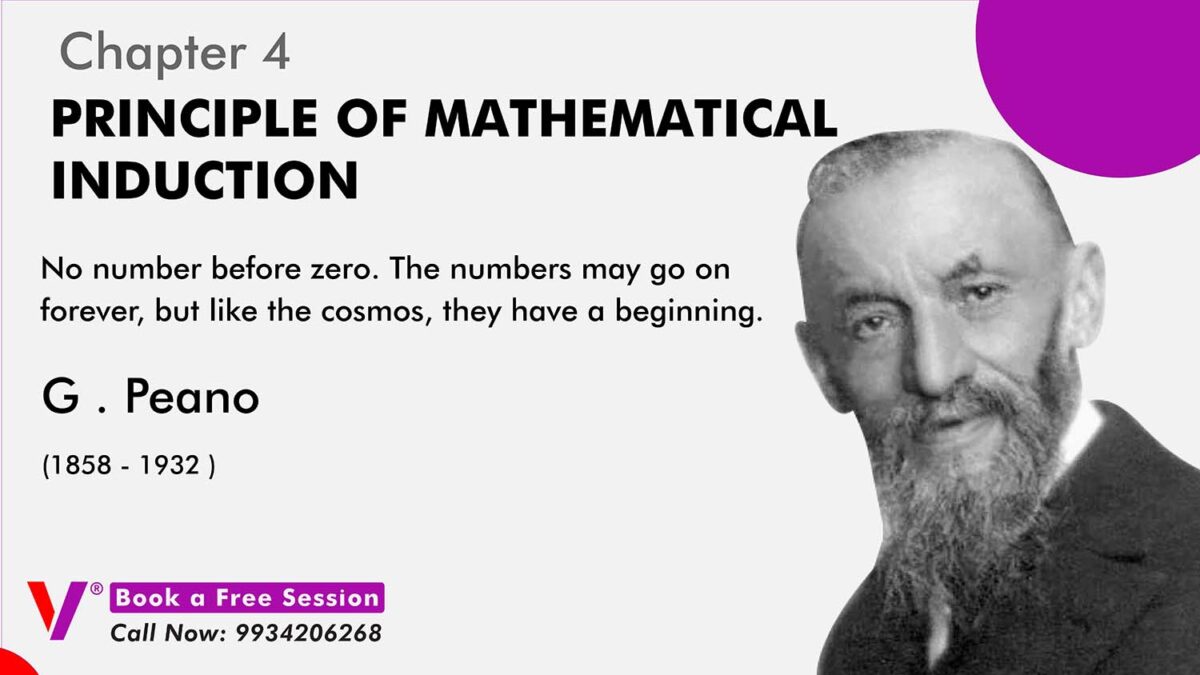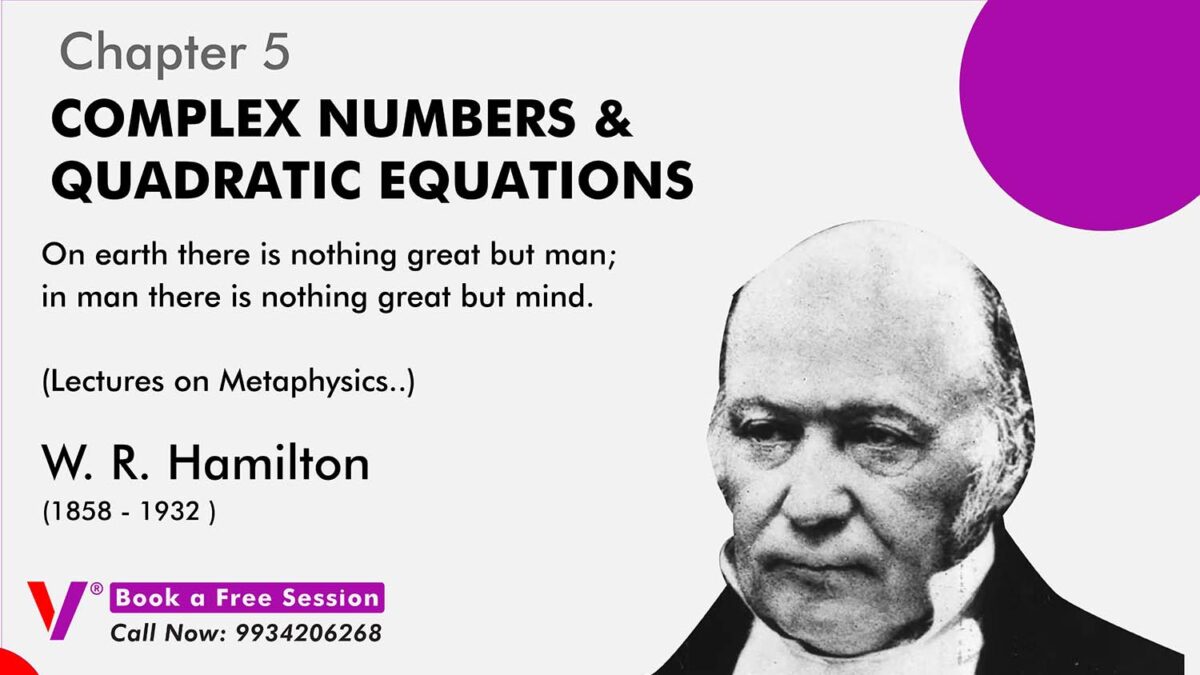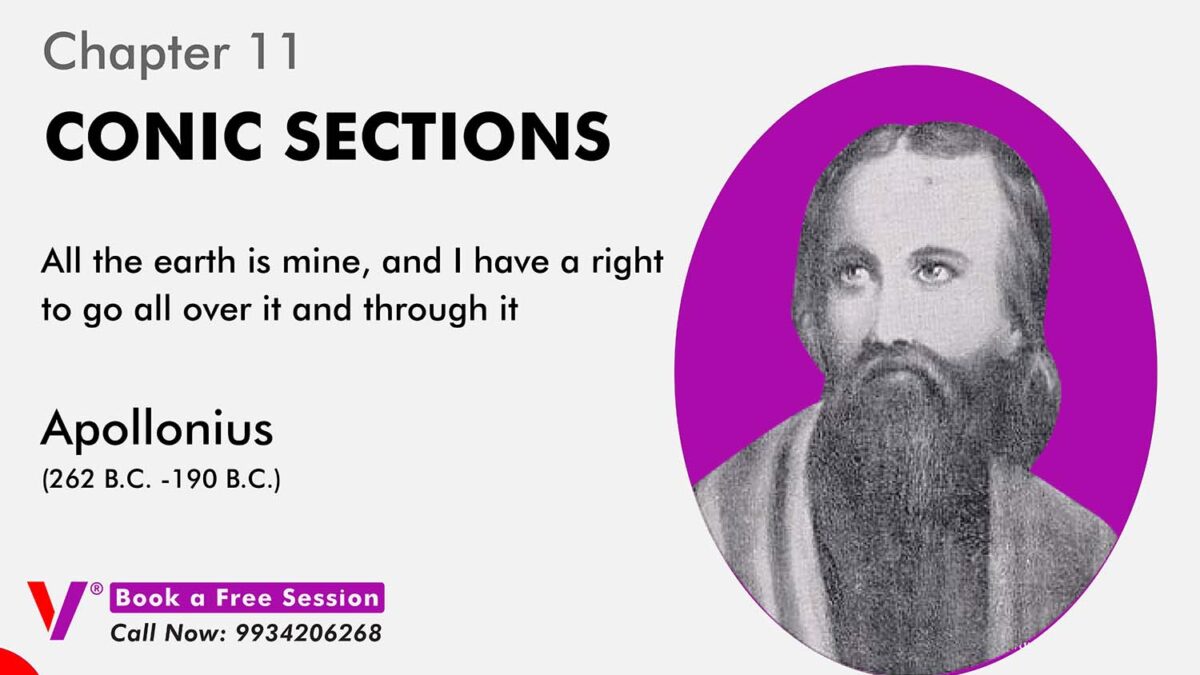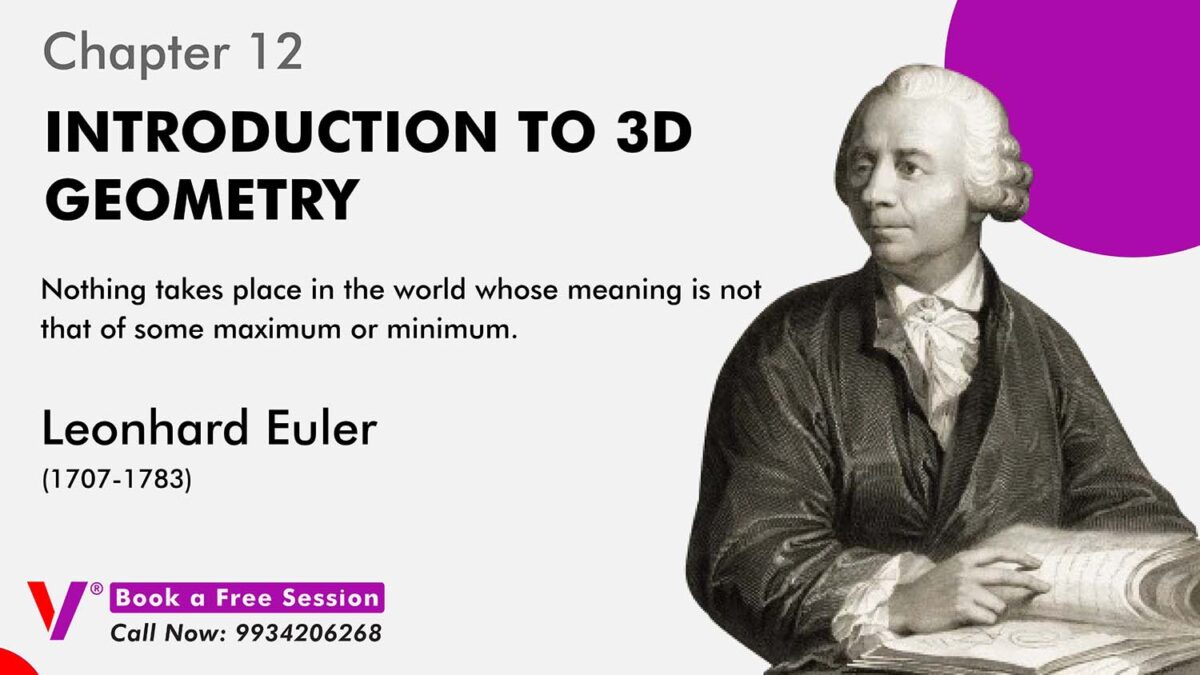Hi, I'm Rahul, I study in Class 11
And I Learn My Subjects Easily With Vikrant Academy®
Hi, I'm Rahul, I study in Class 11
And I Learn My Subjects Easily With Vikrant Academy®
MATHEMATICS
Chapter 1
Sets
1.1 Introduction
1.2 Sets and their Representations
1.3 The Empty Set
1.4 Finite and Infinite Sets
1.5 Equal Sets
1.6 Subsets
1.7 Power Set
1.8 Universal Set
1.9 Venn Diagrams
1.10 Operations on Sets
1.11 Complement of a Set
1.12 Practical Problems on Union and Intersection of Two Sets
Free-Download Full Chapter Questions Solved
2.1 Introduction
2.2 Cartesian Product of Sets
2.3 Relations
2.4 Functions
Free-Download Full Chapter Questions Solved
3.1 Introduction
3.2 Angles
3.3 Trigonometric Functions
3.4 Trigonometric Functions of Sum and Difference of Two Angles
3.5 Trigonometric Equations
Free-Download Full Chapter Questions Solved
4.1 Introduction
4.2 Motivation
4.3 The Principle of Mathematical Induction
Free-Download Full Chapter Questions Solved
5.1 Introduction
5.2 Complex Numbers
5.3 Algebra of Complex Numbers
5.4 The Modulus and the Conjugate of a Complex Number
5.5 Argand Plane and Polar Representation
5.6 Quadratic Equations
Free-Download Full Chapter Questions Solved
6.1 Introduction
6.2 Inequalities
6.3 Algebraic Solutions of Linear Inequalities in One Variable
and their Graphical Representation
6.4 Graphical Solution of Linear Inequalities in Two Variables
6.5 Solution of System of Linear Inequalities in Two Variables
Free-Download Full Chapter Questions Solved
7.1 Introduction
7.2 Fundamental Principle of Counting
7.3 Permutations
7.4 Combinations
Free-Download Full Chapter Questions Solved
8.1 Introduction
8.2 Binomial Theorem for Positive Integral Indices
8.3 General and Middle Terms
Free-Download Full Chapter Questions Solved
9.1 Introduction
9.2 Sequences
9.3 Series
9.4 Arithmetic Progression (A.P.)
9.5 Geometric Progression (G.P.)
9.6 Relationship Between A.M. and G.M.
9.7 Sum to n terms of Special Series
Free-Download Full Chapter Questions Solved
10.1 Introduction
10.2 Slope of a Line
10.3 Various Forms of the Equation of a Line
10.4 General Equation of a Line
10.5 Distance of a Point from a Line
Free-Download Full Chapter Questions Solved
11.1 Introduction
11.2 Sections of a Cone
11.3 Circle
11.4 Parabola
11.5 Ellipse
11.6 Hyperbola
Free-Download Full Chapter Questions Solved
12.1 Introduction
12.2 Coordinate Axes and Coordinate Planes in
Three-Dimensional Space
12.3 Coordinates of a Point in Space
12.4 Distance between Two Points
12.5 Section Formula
Free-Download Full Chapter Questions Solved
13.1 Introduction
13.2 Intuitive Idea of Derivatives
13.3 Limits
13.4 Limits of Trigonometric Functions
13.5 Derivatives
Free-Download Full Chapter Questions Solved
14.1 Introduction
14.2 Statements
14.3 New Statements from Old
14.4 Special Words/Phrases
14.5 Implications
14.6 Validating Statements
Free-Download Full Chapter Questions Solved
15.1 Introduction
15.2 Measures of Dispersion
15.3 Range
15.4 Mean Deviation
15.5 Variance and Standard Deviation
15.6 Analysis of Frequency Distributions
Free-Download Full Chapter Questions Solved
16.1 Introduction
16.2 Random Experiments
16.3 Event
16.4 Axiomatic Approach to Probability
Free-Download Full Chapter Questions Solved
Question & Answers (Solved)
Chapter – 3: Trigonometric Functions
Exercise 3.1 1. Find the radian measures corresponding to the following degree measures: (i) 25° (ii) – 47° 30′ (iii) 240° (iv) 520° Solution: – (iv) 520° 2. Find the degree measures corresponding to the following radian…
Chapter – 1: Sets
Exercise 1.1 1. Which of the following are sets? Justify our answer. (i) The collection of all months of a year beginning with the letter J. (ii) The collection of ten most talented writers of India. (iii) A team of…
Chapter – 2: Relations and Function
Exercise 2.1 1. If , find the values of x and y. Solution: – Given, As the ordered pairs are equal, the corresponding elements should also be equal. Thus, x/3 + 1 = 5/3 and y – 2/3 = 1/3…
Chapter – 4: Principle of Mathematical Induction
Exercise 4.1 Prove the following by using the principle of mathematical induction for all n ∈ N: 1. Solution: – P (k + 1) is true whenever P (k) is true. Therefore, by the principle of mathematical…
Chapter – 5: Complex Numbers and Quadratic Equations
Exercise 5.1 Express each of the complex number given in the Exercises 1 to 10 in the form a + ib. 1. (5i) (-3/5i) Solution: – (5i) (-3/5i) = 5 x (-3/5) x i2 = -3 x…
Chapter – 7: Permutations and Combinations
Exercise 7.1 1. How many 3-digit numbers can be formed from the digits 1, 2, 3, 4 and 5 assuming that (i) Repetition of the digits is allowed? (ii) Repetition of the digits is not allowed? Solution:…
Chapter – 8: Binomial Theorem
Exercise 8.1 Expand each of the expressions in Exercises 1 to 5. 1. (1 – 2x)5 Solution: – From binomial theorem expansion we can write as (1 – 2x)5 = 5Co (1)5 – 5C1 (1)4 (2x) + 5C2 (1)3 (2x)2 – 5C3 (1)2 (2x)3 + 5C4 (1)1 (2x)4 – 5C5 (2x)5 = 1 – 5 (2x) +…
Chapter – 9: Sequences and Series
Exercise 9.1 Write the first five terms of each of the sequences in Exercises 1 to 6 whose nth terms are: 1. an = n (n + 2) Solution: – Given, nth term of a sequence an = n (n…
Chapter – 10: Straight Lines
EXERCISE 10.1 1. Draw a quadrilateral in the Cartesian plane, whose vertices are (– 4, 5), (0, 7), (5, – 5) and (– 4, –2). Also, find its area. Solution: – Let ABCD be the given quadrilateral…
Chapter – 11: Conic Sections
EXERCISE 11.1 In each of the following Exercise 1 to 5, find the equation of the circle with1. Centre (0, 2) and radius 2 Solution: – Given: Centre (0, 2) and radius 2 Let us consider the…
Chapter – 12: Introduction to Three-Dimensional Geometry
EXERCISE 12.1 1. A point is on the x-axis. What are its y coordinate and z-coordinates? Solution: – If a point is on the x-axis, then the coordinates of y and z are 0. So the point is (x, 0, 0)….










